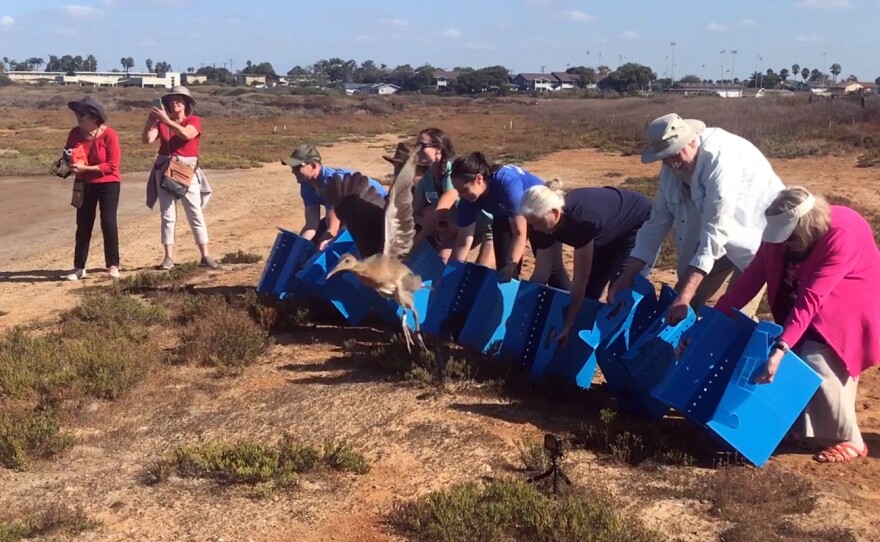A handful of people huddled over cardboard pet carriers at the Tijuana River Estuary on Tuesday.
A cheer went up when the blue boxes were opened and seven endangered light-footed Ridgway rails flapped to freedom.
The birds, which were bred and raised in captivity, flew quickly into the expansive salt marsh. Within a minute or two all of them were out of view and hidden in the tall grass.
The release was a particularly sweet moment for Mike McCoy. He first fought to preserve the estuary nearly 50 years ago.
“This particular species was one of the reasons we were able to protect this estuary, by using the endangered species act and critical habitat to protect that particular species,” McCoy said.
Ridgway rails have been having a tough time of late. U.S. Fish and Wildlife officials say there are only just over 600 of the birds in 18 coastal salt marshes.
RELATED: Scripps Institution Scientists Study Imperial Beach As Sea Level Rises
The Tijuana River Estuary used to be home to more than 250 of the endangered birds, but that population is down dramatically.
An El Nino and a large trans-border sewage spill conspired to crash the estuary's oxygen levels back in 2016.
It did not help that the mouth of the Tijuana River was closed by sand at the same time, keeping the ocean from flushing out the salt marsh.
That killed the animals that Ridgway rails rely on for food.
“The population was impacted by the ecological conditions that year,” said Brian Collins, the refuge manager San Diego Bay and Tijuana Slough National Wildlife Refuges. “And we went from about 127 pairs out here in Oneonta slough in 2016 down to I believe 53 or so the next year. These are our call count estimates.”
RELATED: South Bay Officials, Residents Calls On President To Act On Border Pollution
This is the first time officials have released endangered Ridgway rails here. Federal officials have coordinated the release of more than 500 Ridgway rails at other locations since 2001.
Collins does not have reservations about releasing the endangered birds in a region that is seemingly constantly under assault from sewage, trash and rising sea levels.
A completely safe wild habitat just doesn’t exist, according to Collins.








